Substitution of fishmeal with alternative ingredients did not significantly impact fish growth, feed utilization, gastrointestinal health, blood hematology or measured biochemistry indices
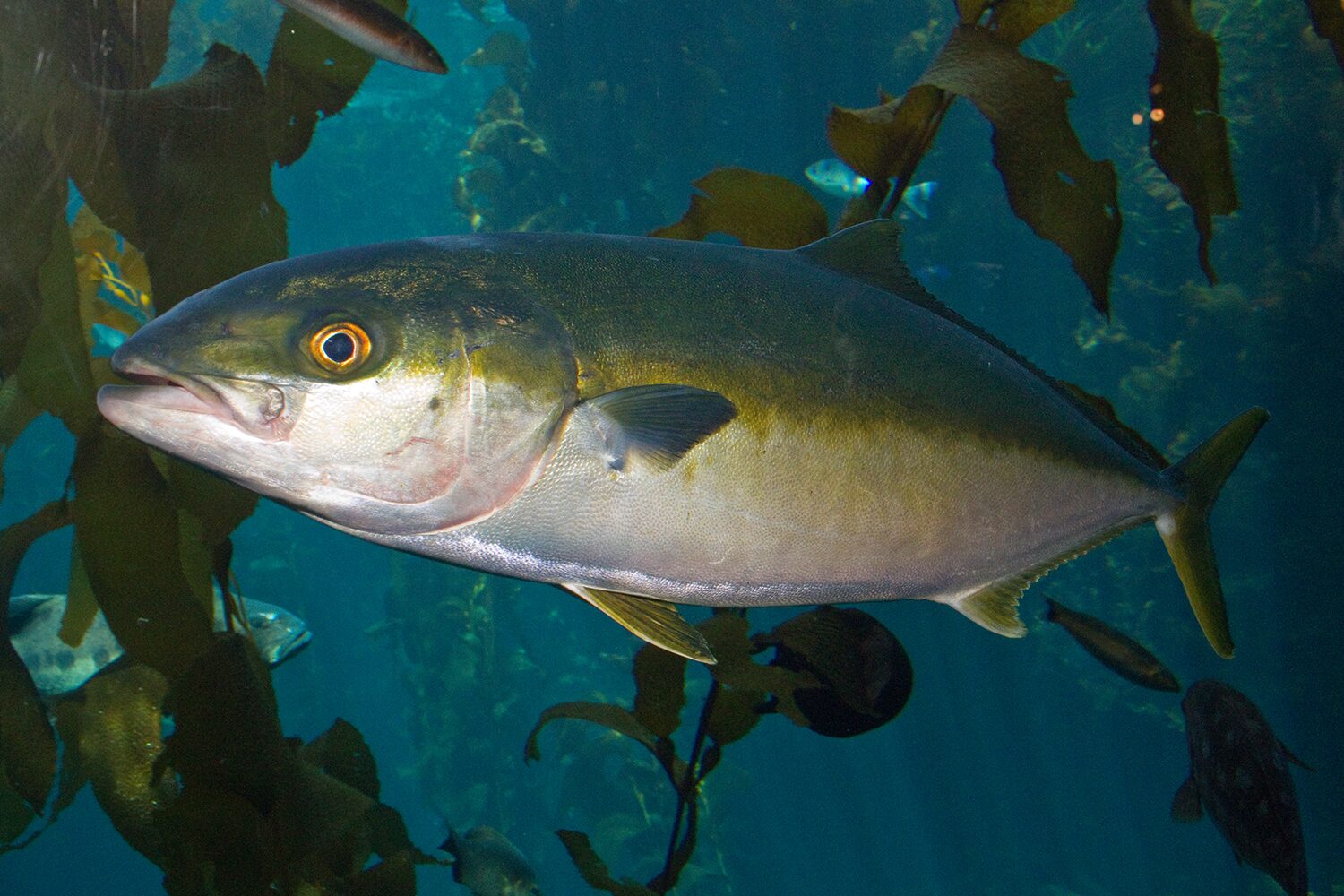
Yellowtail kingfish (Seriola lalandi) are large, carnivorous pelagic fish with a vast natural distribution and cultured globally. Anecdotally, during grow-out, they are fed commercial diet preparations that can contain >30 percent wild-derived fishmeal (WD-FM), with some literature suggesting even higher levels as standard. To improve the sustainability of, and potentially reduce diet costs, validation of commonly available alternative protein ingredients is required for Yellowtail kingfish grow-out diets. Currently, little published information is available regarding the reduction of WD-FM for large yellowtail kingfish during the grow-out phase, which requires the greatest volume of feed.
Many studies have investigated the potential of various dietary ingredients to reduce WD-FM levels in aquaculture diets for fish – including land animal protein, plant proteins, novel algal or bacterial proteins and fishmeal byproducts – with many recent comprehensive reviews on the subject now available. Studies on fishmeal replacement have met with varying levels of success in many aquatic species.
Ingredients including poultry meal (PM), soy protein concentrate (SPC) and byproduct fishmeal (BP-FM) were identified to have great potential to partially replace dietary inclusions of WD-FM in production diets for large yellowtail kingfish. These ingredients have the added benefits of being mostly comparable in terms of their amino acid profile, they are commonly available, and they will assist in improving sustainability targets for farms.
Current commercial yellowtail kingfish diets contain varying levels of PM as a protein source; however, the long-term effect on growth performance when replacing WD-FM with PM in diets for large yellowtail kingfish is not yet understood. Recently, Stone et al. reported the optimal crude dietary protein and lipid to be ∼43 percent and ∼ 25 percent respectively in large yellowtail kingfish grown over summer and fed diets with 30 percent WD-FM. However, it remains to be seen how much of the WD-FM can be replaced with alternative ingredients while maintaining performance using the previously determined optimal protein and lipid macronutrients. Research has shown that alternative ingredients can replace WD-FM for juvenile yellowtail kingfish and other aquaculture species. However, little published information is available regarding the reduction of WD-FM levels in commercial diets for large yellowtail kingfish (> 1.5 kg).
This article – summarized from the original publication (Salini, M.J. 2023. Reducing dietary wild derived fishmeal inclusion levels in production diets for large yellowtail kingfish (Seriola lalandi). Aquaculture Volume 572, 15 July 2023, 739487) – discusses a study that investigated the growth performance, feed utilization, and health of YTK fed diets where dietary inclusions of WD-FM were replaced with PM, SPC and BP-FM.
Study setup
This 36-week study was carried out in the pool-farm facility at the South Australian Research and Development Institute, South Australian Aquatic Science Centre (SARDI SAASC; West Beach, South Australia, Australia). Yellowtail kingfish (n = 306; 2.52 ± 0.25 kg; 546 ± 20 mm fork length; mean ± standard deviation) were obtained from Clean Seas Seafood (Port Lincoln, South Australia, Australia). Upon arrival at the SARDI SAASC facility, yellowtail kingfish were transferred to 5,000-liter outdoor undercover tanks supplied with partially recirculating (100 percent system water exchange/day) seawater at ambient temperature and acclimated held for one month.
The research was designed to replace dietary inclusions of WD-FM with alternative protein ingredients including poultry meal, soy protein concentrate and by-product fishmeal (PM, SPC and BP-FM) and measure the effect on the growth performance, feed utilization, and health of large yellowtail kingfish (2.5 kg initial weight) at ambient water temperatures (average 16.6 degrees-C). Six diets were formulated on a digestible basis to contain 39 percent digestible protein (∼45–46 percent crude protein), 23 percent digestible lipid (∼24–25 percent crude lipid), and a digestible energy level of 17 megajoules (MJ)/kg (∼19 MJ/kg gross energy level). Fish were fed to apparent satiation once daily at 10:00 a.m.
The PM, SPC and BP-FM ingredients were formulated into a control diet on a digestible protein basis by reducing wild-derived fishmeal levels to either 10 or 20 percent of the diet. For detailed information on the formulation of the experimental diets, as well as the experimental design, animal husbandry, data collection and analyses, refer to the original publication.
Results and discussion
This study investigated the potential for replacing dietary inclusions of wild-derived fishmeal (WD-FM) with the alternative ingredients poultry meal (PM), soy protein concentrate (SPC) and byproduct fishmeal (BP-FM) on the growth performance, feed utilization, and some indicators of health on large yellowtail kingfish. The study was designed to be commercially relevant in many aspects, using ∼2.5 kg initial fish and a long culture period, subject to natural seasonal variations. The lack of significant differences observed in production performance or health indicators demonstrates flexibility in formulation strategies for on-growing yellowtail kingfish. This research provides a new framework for raw material selection, while meeting sustainability and economic criteria for commercial yellowtail kingfish production.
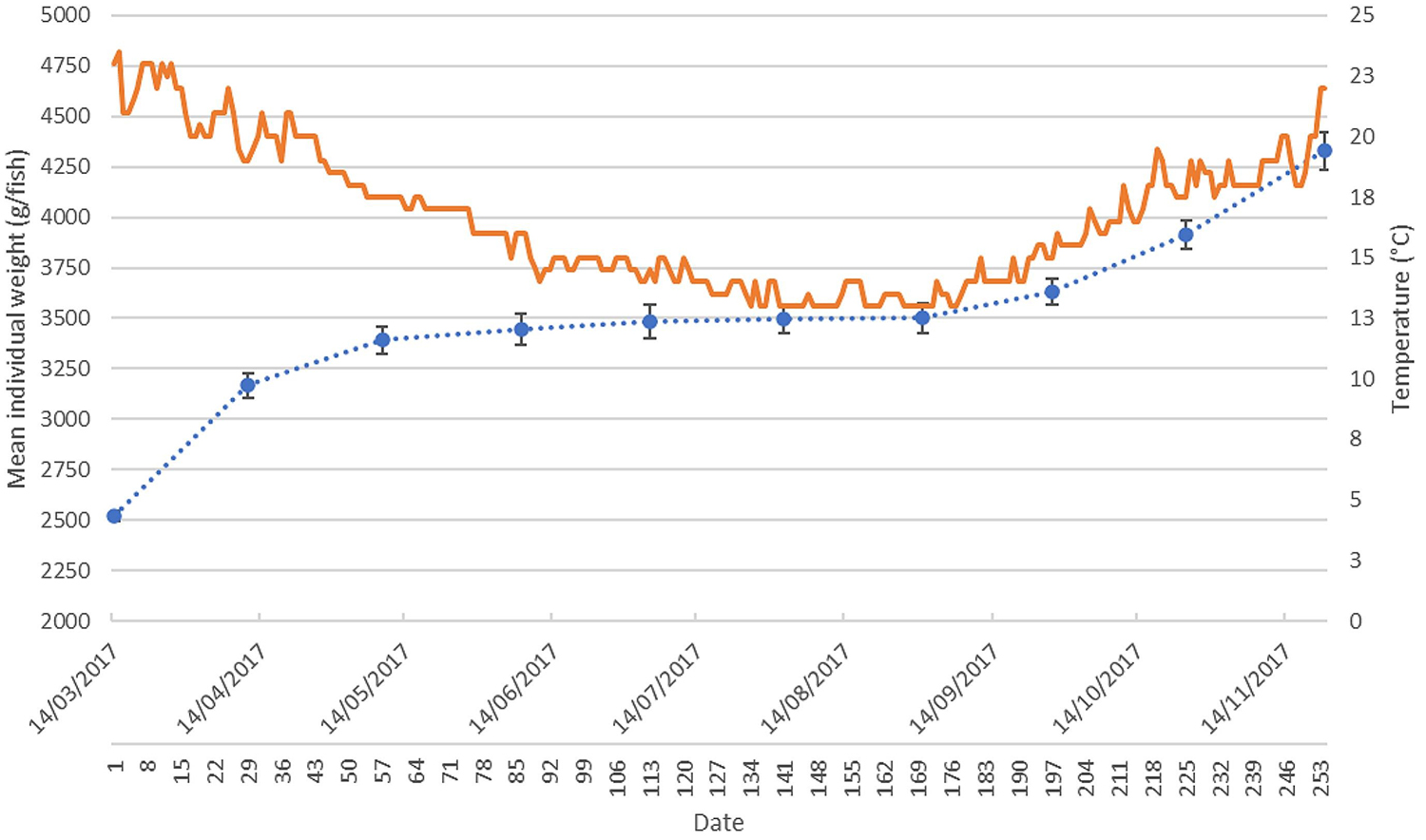
As BP-FM is derived from fish that have been processed to recover the edible portion of flesh, bone and hence ash contents are typically higher than WD-FM. In addition to the high ash content in BP-FM, the protein quality is potentially lower, as it is comprised of a large proportion of connective tissue and. Researchers reported lower content of the first two limiting amino acids, lysine (4.3 vs 5.5 percent) and methionine (1.8 vs 2.2 percent) in tuna BP-FM compared to WD-FM. In the current study, the lysine (4.1 vs 4.3 percent) and methionine (1.6 vs 1.7 percent) levels in the BP-FM were also lower than in the WD-FM.
The apparent digestibility values for dry matter and protein were significantly lower for the yellowtail kingfish fed the BP-FM 66 percent which contained the highest proportion of BP-FM (21.4 percent of the diet), compared to the diets BP-FM 33 percent and BP-FM 33 percent + PM 33 percent. High ash levels have been reported to interfere with nutrient digestion in a range of fish species. Reduced nutrient digestibility may have contributed to the numerically poorer feed utilization parameters of the yellowtail kingfish fed the diet BP-FM 66 percent. These findings together suggest that BP-FM inclusion may be limited to around 10 percent in commercial diets for yellowtail kingfish that contain 20 percent wild-derived fishmeal. Additionally, consideration must always be given to the ash and protein quality of ingredients derived from processing waste streams when selecting ingredients for commercial yellowtail kingfish diets.
Many parameters were measured in this experiment, and for the vast majority, there were no significant differences detected among the treatment groups. It is important to note that the amino acid composition of the flesh did not vary in response to the diets, despite the different ingredients tested. Moreover, there were no aberrations to the fatty acid profiles of the flesh, consistent with expectations. The measured potassium content was significantly different with diet BP-FM 66 percent fed fish having lower levels than the WD-FM 100 percent, BP-FM 33 percent and SPC 33 percent fed fish. However, the levels were all within normal ranges for similar-sized fish observed from previous experiments.
¿Es RAS el cambio de juego que necesita el sector acuícola europeo?
All alternative protein sources used in this study, including the BP-FM, result in reduced fish in: fish out (FIFO) ratio. The inclusion of the alternative protein sources in this experiment resulted in improvements in the (FIFO) ratio of up to 35.1 percent without negatively impacting any production or health measurements. An added advantage of the alternative ingredients tested was that they were more cost-effective than WD-FM at the time of diet production (proprietary information from the fish feed companies involved), which may also result in improved economics of the farm. Given that there were no significant differences in growth and FCR, actual savings realized by producers may be considerable in terms of sustainability and economics; however, on-farm validation may still be warranted prior to full adoption.
The growth performance of the large yellowtail kingfish fed diets containing the alternative protein sources may be further enhanced with specific amino acid fortification. Based on growth performance and feed utilization the authors estimated the methionine requirement to be ∼2.0 percent of the diet. It is known that faster-growing juvenile fish have higher nutrient demands and therefore it is possible that the levels of dietary methionine provided in the current experiment may be satisfactory for optimal growth performance. However, future studies may be warranted to investigate amino acid requirements in larger yellowtail kingfish as WD-FM levels are gradually reduced in growout diets. This demonstrates the importance of incremental improvements to the nutrient requirements for yellowtail kingfish at all stages of development.
Perspectives
Our results provide valuable, commercially relevant information to reduce the dietary WD-FM inclusion levels in production diets for large yellowtail kingfish. There were no significant negative effects on growth performance or feed utilization noted with any of the diets evaluated, and there were only minor changes to the apparent digestibility coefficients noted.
Reducing dietary WD-FM inclusions in current commercial diets with commonly available alternative ingredients may lead to improved diet sustainability. Sustainability, as measured by the fish-in-fish-out ratio, was improved by up to ∼35 percent by the incorporation of PM, SPC and BP-FM ingredients. This may provide yellowtail kingfish producers with major advantages in terms of accreditation, market access and improved consumer perception.
In addition, information pertaining to the replacement of WD-FM with alternative protein sources will provide flexibility for feed manufacturers to select raw materials that most economically meet the nutrient criteria in diet formulations for yellowtail kingfish. This is particularly advantageous, as availability and prices for fish feed ingredients remain volatile. Based on results from the current investigation, we recommend that when using SPC in diets for large yellowtail kingfish, formulations contain at least 20 percent WD-FM.
We recommend that WD-FM substitution with PM, SPC and BP-FM in diets be followed up with further pilot-scale commercial trials before full diet formulation flexibility is realized.
Now that you've reached the end of the article ...
… please consider supporting GSA’s mission to advance responsible seafood practices through education, advocacy and third-party assurances. The Advocate aims to document the evolution of responsible seafood practices and share the expansive knowledge of our vast network of contributors.
By becoming a Global Seafood Alliance member, you’re ensuring that all of the pre-competitive work we do through member benefits, resources and events can continue. Individual membership costs just $50 a year.
Not a GSA member? Join us.
Author
-
Dr. Michael J. Salini
Corresponding author
Nutrition and Seafood Laboratory (NuSea.Lab), School of Life and Environmental Sciences, Deakin University, Queenscliff, 3225, VIC, Australia
Tagged With
Related Posts
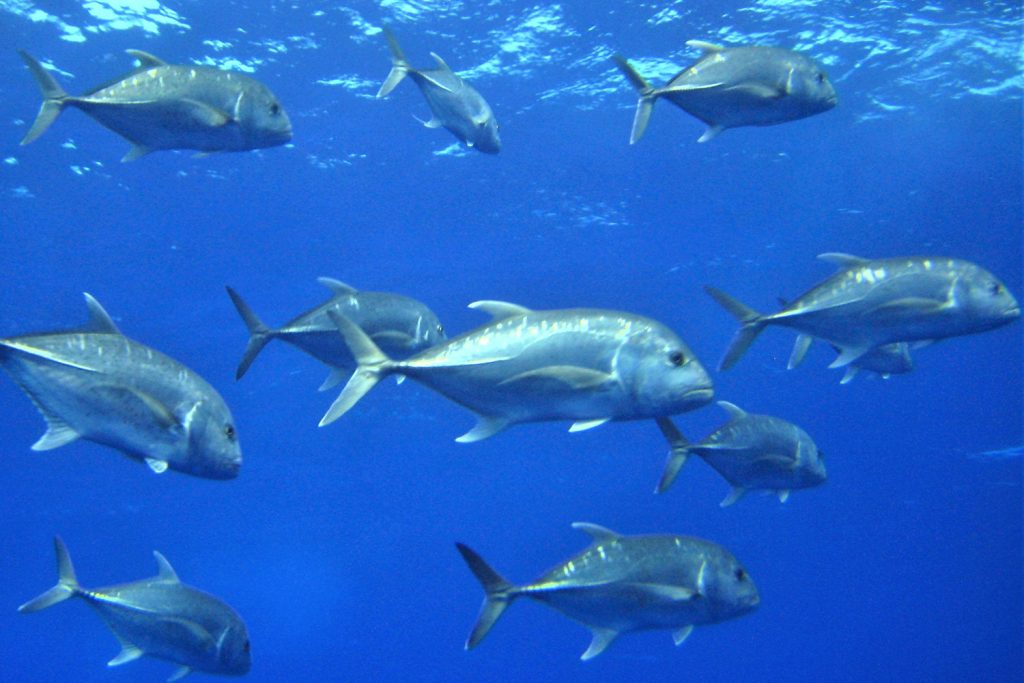
Aquafeeds
Evaluating the effect of dietary protein and lipid on the growth performance of juvenile giant trevally
In this trial, the growth performance of juvenile giant trevally was the highest when the fish were fed a 52 percent protein, 10 percent lipid diet.
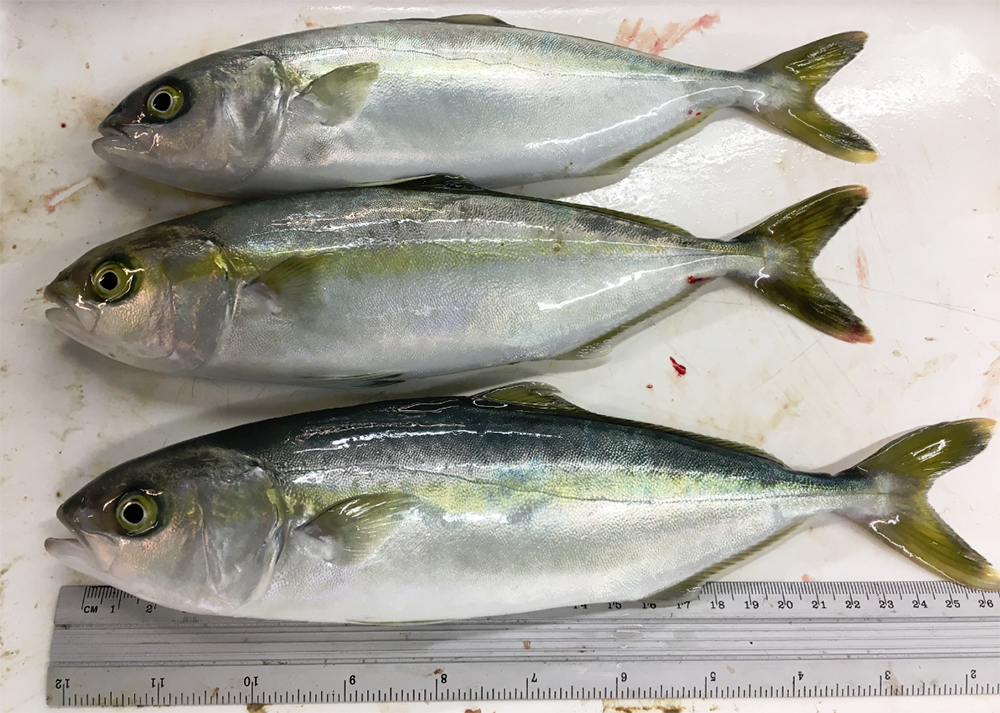
Health & Welfare
Long-chain PUFA requirements of juvenile California yellowtail
This study shows that soybean oil can totally replace fish oil in California yellowtail aquafeeds without affecting production performance and reducing the omega-3 fatty acid profile of fish tissues, as long as acceptable levels of ARA and DHA are provided.
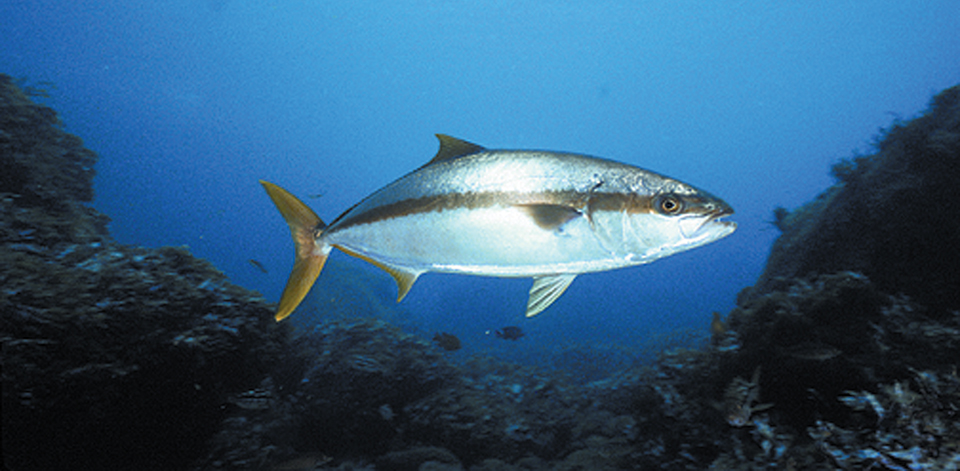
Health & Welfare
Research on spawning, larval rearing of yellowtail jack continues at Hubbs-SeaWorld
The Hubbs-SeaWorld Research Institute’s Mission Bay Laboratory has had limited success hatching and rearing eggs from captive wild yellowtail jack broodstock, but its program is improving.
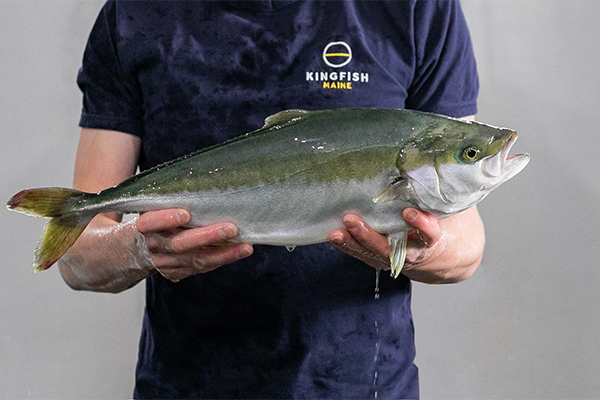
Intelligence
Kingfish Maine harvests small batch of RAS Dutch yellowtail
Kingfish Maine released a limited run of Dutch yellowtail produced at a RAS facility in Maine, a precursor to its upcoming permanent site.



